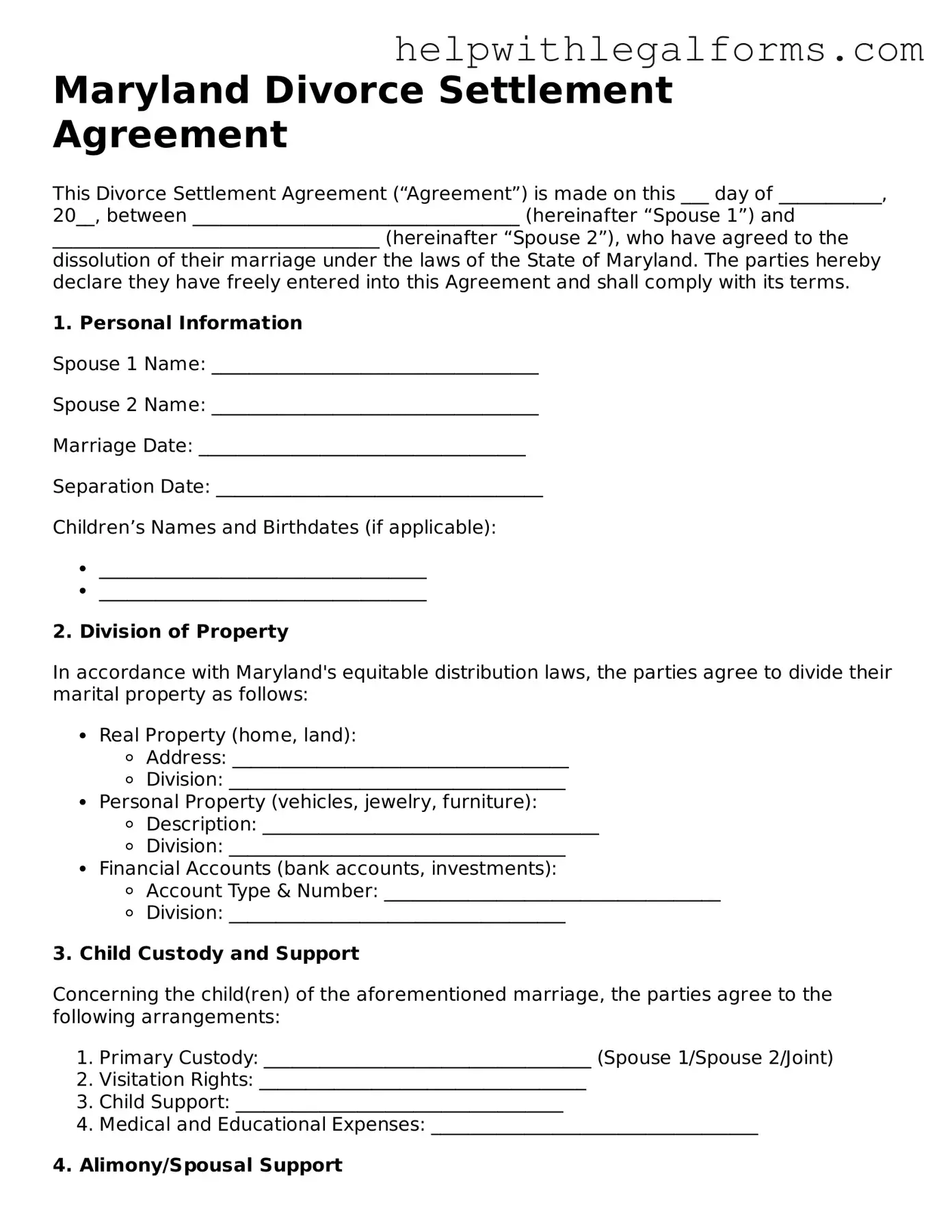What is a Maryland Divorce Settlement Agreement?
A Maryland Divorce Settlement Agreement is a legally binding document that outlines how a divorcing couple has agreed to settle matters such as asset division, debt responsibility, alimony, child support, and custody arrangements. This agreement is tailored to fit the specific needs and agreements of both parties, ensuring a smoother transition to post-divorce life.
Do I need a lawyer to create a Maryland Divorce Settlement Agreement?
While it's not mandatory to have a lawyer, getting legal advice can be very helpful. A lawyer can ensure that the agreement is fair, legally sound, and that your rights are protected. They can also help avoid issues that you might not anticipate on your own.
How is property divided in a Maryland Divorce Settlement Agreement?
In Maryland, property and debt acquired during marriage are considered marital property and should be divided equitably, but not necessarily equally, between both parties. This division is based on multiple factors such as the length of the marriage, contributions to the marital property, and each party's financial circumstances.
Can we modify our Divorce Settlement Agreement after it is finalized?
Yes, but both parties must agree to any changes. These modifications should be filed with the court for approval to ensure they're legally enforceable. It's important to note that certain aspects, particularly involving children, may require a showing of a significant change in circumstances to be modified.
What happens if we cannot agree on a settlement?
If both parties cannot come to an agreement, the case may go to trial, where a judge will make decisions on contested issues. This process can be longer and more costly, making it beneficial for both parties to attempt to reach an agreement through negotiation or mediation.
Is mediation required in Maryland divorce cases?
While not always required, mediation is strongly encouraged in Maryland, especially for cases involving children. Mediation can be a more amicable, cost-effective way to reach an agreement on various issues without needing a court's intervention.
How does child custody work in a Maryland Divorce Settlement Agreement?
Child custody arrangements are made based on the best interests of the child(ren). This includes considering the child's relationship with each parent, the parents' ability to co-parent, and the child's health and safety. Parents can agree on joint or sole custody and specify arrangements in their Divorce Settlement Agreement.
What are the steps to finalize a Maryland Divorce Settlement Agreement?
To finalize your agreement, both parties must sign the document, making it legally binding. It should then be filed with the court, usually as part of the divorce proceedings. The court will review the agreement to ensure it's fair and in compliance with Maryland law before incorporating it into the final divorce decree.
